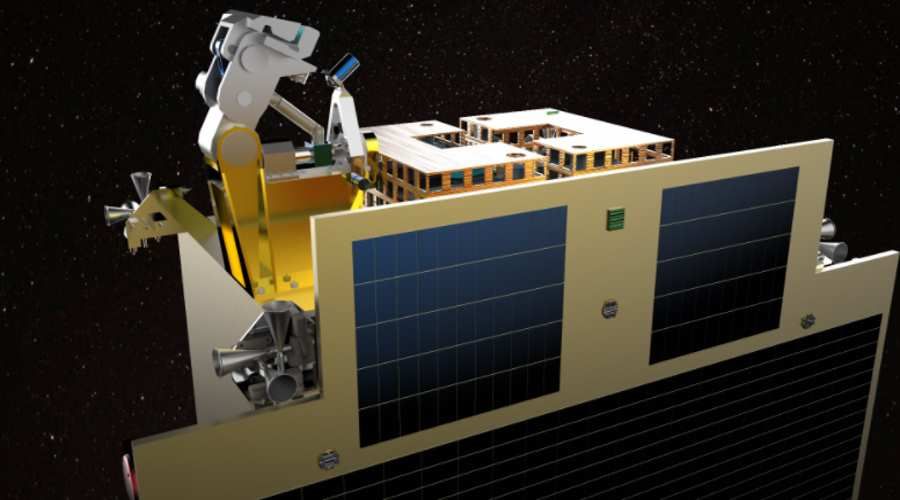Polish companies in the next stage of the mission carried out by ESA
The mechanism designed by SENER Poland in the B1 phase of the mission e.Deorbit has won over a competing solution and has been selected by the European Space Agency for further development. SENER operates as part of a consortium led by Airbus, which includes two other entities from our country.
With each year, traffic in Earth orbit is increasing, but the threat to satelliteow and załog vehicleoin space constitute space junk. ESA wants to combat this problem, so as part of the initiative „Clean space” organizes a mission e.Deorbit, whichorej aims to remove the inactive Envisat satellite from orbit. It is the heaviest civilian unmanned satellite, weighing as much as 8.2 tons and, including the solar panel, measuring more than 25 meteroin length.
The clamping mechanism, designed by SENER Poland, will be used to capture Envisat after the so-called “shuttle” has been in place for three years. The chase satellite will pull it towards itself using a robotic arm. The engines will then be started and the satellites will be directed into the Earth’s atmosphere, where they will be partially burned and their remains will fall into the Pacific Ocean.
Mission e.Deorbit poses a major technological challenge due to the size of theow and the unknown rotation of Envisat’s. For this reason, ESA and national agencies are conducting numerous research and development projects. In 2016-2017, the work was carried out roThe project is being carried out in parallel by two competing international consortiums, led by ktorych OHB and Airbus fixed. For the next stage of the mission, ESA has already selected only one group, the one led by Airbus. It includes as many as three entities from our country – SENER Poland, the Space Research Center of the Polish Academy of Sciences and GMV.
– In designing the clamping mechanism for the e mission.Deorbit has been challenged by the significant forces acting on the device during maneuveringoin and wymog high rigidity connection to Envisat. Precision is no less important – Indeed, the mechanism must catch the inactive satellite by the ring, whichory once connected it to the rocket carrying the – moAleksandra Bukała, General Director of SENER Poland.
It is estimated that wokoł Earth orbits tens of thousands of objectsoIn larger than 10 cm, which can threaten the safety of space missions, including manned. There are many times more smaller debris. The largest objects are primarily inactive satellites and gorne launch rocket components. Space agencies have only recently decided to combat the problem of orbiting debris. For example, all new ESA satellites must have systems that allow them to either deorbit or fly away on a „graveyard orbit”. However, the most serious problem remains objects lifted above the Earth in the past.
